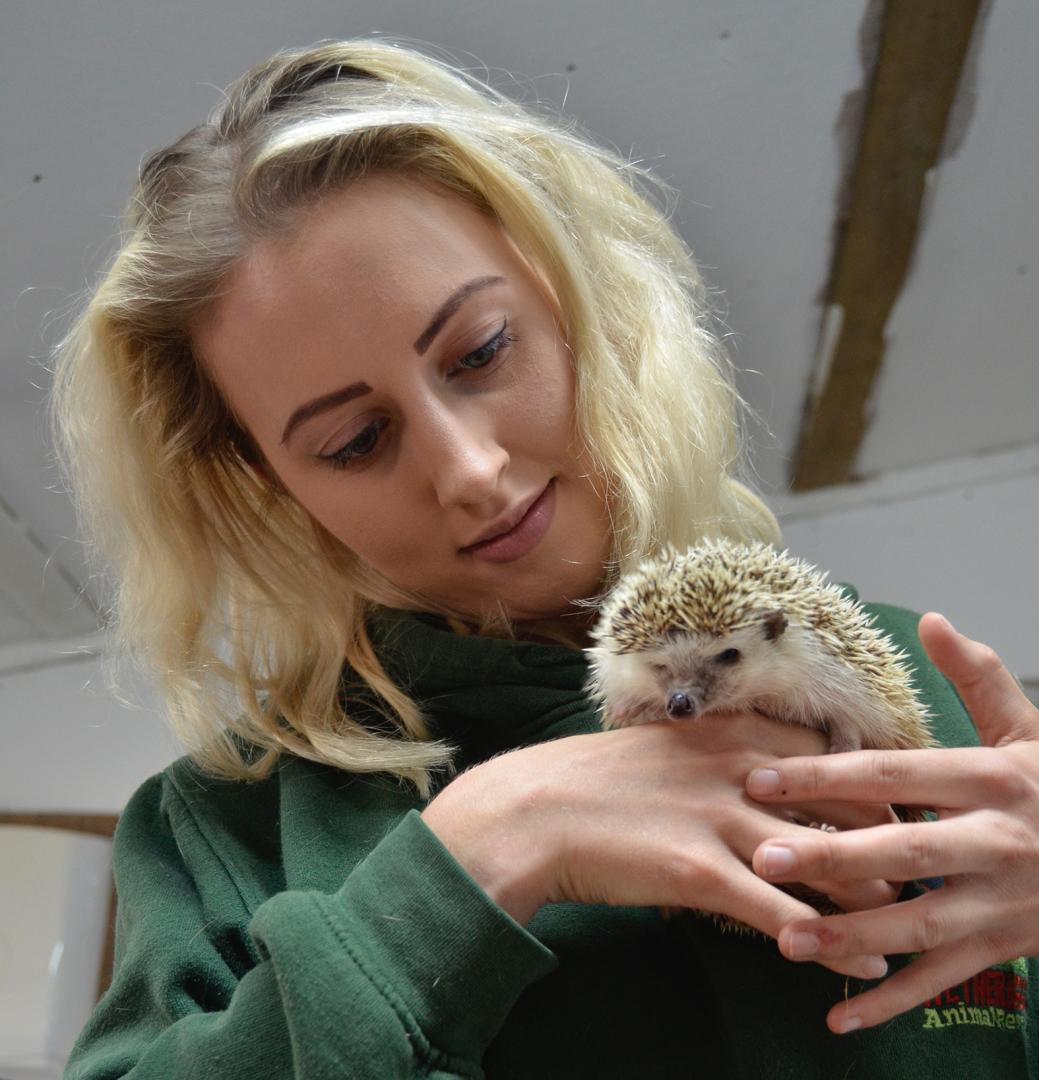The population of hedgehogs is suffering an alarming decline. Reporter Nicky Carter found out how an animal rescue centre is doing its bit to help the native species
HEDGEHOGS have been roaming around for 15 million years. There are more than 15 species, but the common European hedgehog is on the decline in Britain with more than a third of its population being lost in the last ten years in urban areas – the figure is even higher for rural locations.
The fall in the population of these unique nocturnal creatures is dramatic but staff at Wetheriggs Animal Rescue Centre, at Thorpe Farm Centre near Barnard Castle, are doing what they can by regularly taking in sick and injured creatures.
So far this year they have brought in 57 rescued hedgehogs including one which was found by concerned dog owner Kim Ellis two weeks ago.
Ms Ellis spotted the hedgehog when walking her dogs on the upper Demesnes in Barnard Castle. When she spotted it again several days later in the same place she leapt into action.
Ms Ellis said: “Hedgy was out in the open and didn’t curl up when the dogs had a sniff. I had to do a 20-minute round trip home to pick up a box and a towel. When I got back there were other dog walkers, but it had moved. I asked two different girls if they had seen a hedgehog and one of them pointed it out saying quite nonchalantly her greyhound had picked it up and tossed it in the air.
“It was obviously starving – a featherweight juvenile bag of bones. It turns out it also had a broken leg, which was why it couldn’t curl up or forage for food. Hedgehogs used to be a common sight, but are now in real trouble and every one is precious.”
Ms Ellis contacted Wetherigg’s Animal Rescue Centre and after a week’s stay it was fit enough to be released back into the wild.
Although it did have a broken leg Terry Bowes, who runs the animal rescue centre, explained it was not normal to splint the leg as they are so small.
Mr Bowes added: “Sometimes the vet will amputate a leg and the hedgehogs do manage okay but normally after rest and feeding they are well enough to go on their way.
“Hedgehogs in general are really having a hard time and there are many reasons to blame.
“Excessive use of pesticides is killing off the hedgehog’s natural food supply and their only defence against vehicles is to roll into a ball, which doesn’t really work.
“We try to make sure the hedgehogs are in and out of the rescue centre as quickly as possible, especially at this time of the year when they are getting ready to hibernate, otherwise we have to keep them over the whole winter.”
Mr Bowes added they have managed to release 42 of the rescued hedgehogs back into the wild so far.
He said: “The thing is if you see a hedgehog out in the daylight then there is definitely something up with it. If it isn’t able to curl up, then it will need help.”
The hedgehog has relatively few predators thanks to it’s spiny coat.
Badgers are its main predator, but foxes, dogs, tawny owls and even domestic cats have been known to make a meal of them, especially young underdeveloped ones.
If you do spot a hedgehog out in the day then it may be injured or starving.
If it is still in the same place after several hours, experts say it may be helped by intervening.
Mr Bowes said that if the animal is juvenile then you use gloves or a towel to pick it up.
“Make sure it is kept warm and hydrated. Hedgehogs are lactose intolerant so don’t give them milk, only water. And if you have cat or dog food they will probably enjoy nibbling on this.
However if you think the hedgehog has sustained an injury, you may have to contact the veterinary surgery,” he said.
Wobbly hedgehog syndrome is another disease affecting hedgehogs, though it appears to be contained to African pygmy hedgehogs, which were bred to be pets. They are domesticated hybrid and don’t occur in the wild.
The progressive neurological disorder is similar to multiple sclerosis, has no known cure and causes the animal to lose muscle control.




![A COUNTY councillor is backing a campaign to get a pedestrian crossing in Staindrop. Frustrated parish councillors in the village summoned their county council representative Cllr George Richardson to their latest meeting to discuss several issues, including the call for a safe way to cross the A688. Earlier this year their request for a crossing was turned down by the county council’s highways officers. Parish council chairman Jonothan Raper described the reasons for the refusal as “spurious” and called on Cllr Richardson to support their campaign. He added: “One of the arguments they made was there is no clear line of desire when they studied the village – well this isn’t a clear line of desire because there isn’t a crossing, people cross whenever they can. “When the lollipop person was there, one of the things I noticed was people would walk all the way down to the lollipop person to cross the road to go to the shop or to go to the school.” He added a problem of parking at the primary school is exacerbated because people are too afraid to walk their children across the road. Cllr Richardson said he had supported previous attempts for a crossing point with the first being made about 15 years ago. He added: “We went fairly well down the road with that and they looked into it. The only recommended place was where the bus stop is and to get the visibility splays, people on the other side of the road would lose their parking. “That didn’t go down well so it just died a death.” Cllr Raper said he suspected the real reason for the officers’ refusal was the cost of installing a crossing. He added that much of the cost could be recovered from savings made on not having to employ a lollipop patrol. Cllr Raper said: “A lollipop person only provides a benefit of crossing for three hours of the day. You are getting 21 extra hours of crossing time [with a pedestrian crossing].” Cllr Richardson said he would raise the issue with the county council’s cabinet member for highways, Cllr John Shuttleworth.](https://teesdalemercury.co.uk/wp-content/uploads/2024/12/georgeR-120x86.jpg)





